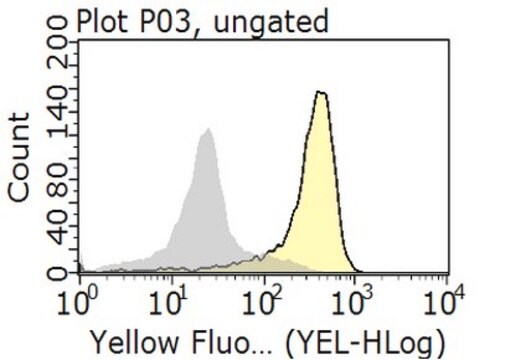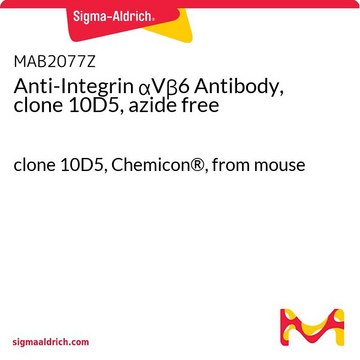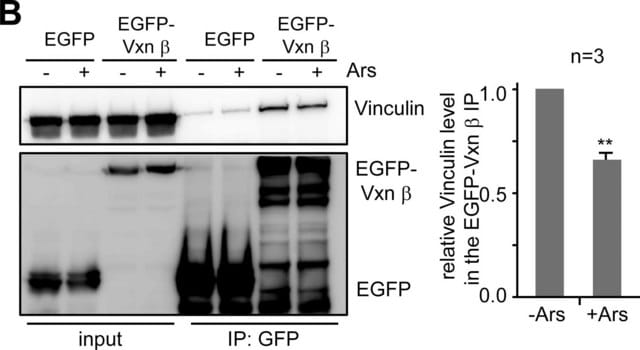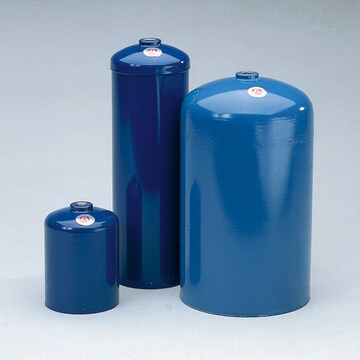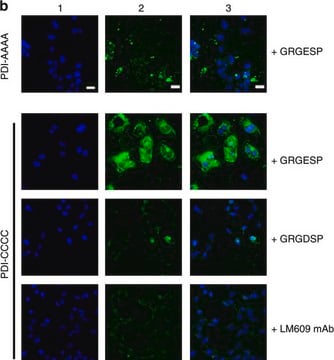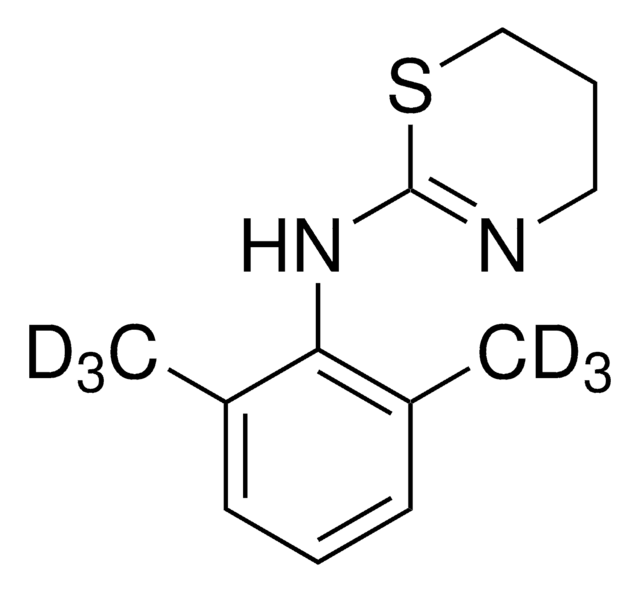CBL1346Z-I
Anti-mouse Integrin alphaV Antibody, clone RMV-7 (Preservative free)
clone RMV-7, from rat
Sinónimos:
Integrin alpha-V, Vitronectin receptor subunit alpha, CD51, 1.Integrin alpha-V heavy chain2.Integrin alpha-V light chain, Integrin alphaV
About This Item
Productos recomendados
origen biológico
rat
Nivel de calidad
forma del anticuerpo
purified immunoglobulin
tipo de anticuerpo
primary antibodies
clon
RMV-7, monoclonal
reactividad de especies
mouse
técnicas
flow cytometry: suitable
immunoprecipitation (IP): suitable
western blot: suitable
isotipo
IgG1κ
Nº de acceso NCBI
Nº de acceso UniProt
Condiciones de envío
dry ice
modificación del objetivo postraduccional
unmodified
Información sobre el gen
mouse ... Itgav(16410)
Descripción general
Especificidad
Inmunógeno
Aplicación
Immunoprecipitation Analysis: A representative lot was used by an independent laboratory in LAK cell lysate. (Takahashi, K. et al., (1990). J. Immunol. 145:4371.)
Blocking Assay: Adhesion and LAK cell cytotoxicity was shown using a representative lot (Takahashi, K. et al., (1990). J. Immunol. 145:4371.)
Calidad
Flow Cytometry Analysis: 0.2 µg of this antibody detected Integrin alphaV in murine 3T3-L1 cells .
Descripción de destino
Ligadura / enlace
Forma física
Nota de análisis
Murine 3T3-L1 cells
Otras notas
¿No encuentra el producto adecuado?
Pruebe nuestro Herramienta de selección de productos.
Código de clase de almacenamiento
12 - Non Combustible Liquids
Clase de riesgo para el agua (WGK)
WGK 2
Punto de inflamabilidad (°F)
Not applicable
Punto de inflamabilidad (°C)
Not applicable
Certificados de análisis (COA)
Busque Certificados de análisis (COA) introduciendo el número de lote del producto. Los números de lote se encuentran en la etiqueta del producto después de las palabras «Lot» o «Batch»
¿Ya tiene este producto?
Encuentre la documentación para los productos que ha comprado recientemente en la Biblioteca de documentos.
Nuestro equipo de científicos tiene experiencia en todas las áreas de investigación: Ciencias de la vida, Ciencia de los materiales, Síntesis química, Cromatografía, Analítica y muchas otras.
Póngase en contacto con el Servicio técnico


